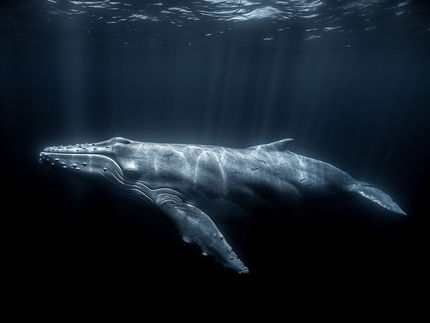Decyphering the genetic program of the eye thanks to Balzan Prize Money
Advertisement
The number of genes activated during eye development increases by up to 400 percent. That was one of the surprising results of a research project on the fruit fly carried out at the University of Basel (Switzerland). The project was financed to a large extent by the 2002 Balzan prize for Developmental biology, which was awarded to Prof. Walter Gehring. A total of over 150,000 measurements of gene activity during eye development were analysed and have been made available in a publicly accessible database.
Insects have complex compound eyes and vertebrates have inverse lens eyes. However, although these types of eye are very different in terms of their structure, the same genes are used in the early stages of their development.To obtain a better understanding of how the activity of identical genes can lead to the development of extremely different eye types, it is essential to know exactly how all the relevant genes behave.
The genetic program of eye development has now been decyphered at the Biozentrum of the University of Basel using genechips and a model organism, the fruit fly Drosophila melanogaster. This project was made possible by the financial support from Prof. Walter Gehring. In 2002, Prof. Gehring was awarded the Balzan Prize for Developmental Biology and, as is stipulated in the Balzan foundation's rules, used half of the one million Swiss Francs prize money to fund a research project involving young scientists. Lydia Michaut, a young collaborator of Walter Gehring, was given the opportunity to launch this endeavour.
This project has now been completed and has generated a large amount of data that in many respects are astounding. Large-scale analysis of gene expression has shown that the number of genes activated in the eye increases dramatically as an insect develops. During the larval stage, 98 genes are specially activated for this purpose. The figure rises to 409 during the pupal stage, and 474 in the fully grown insect.
However, it is interesting to note that the functions of the activated genes vary considerably. Dr. Lydia Michaut, who pioneered this project, explains: "During the larval stage, 25 percent of the genes activated for eye development are used to regulate other genes. You could say that they initiate the next stage in eye development. During the pupal stage, most of the genes are used to control the creation of the eye structure and, when the insect is fully grown, gene activity is very definitely geared towards receiving and transmitting light stimuli."
By analysing the data in greater detail and comparing it with corresponding measurements from mice, the scientists working on the project have shown that Drosophila produces 1,033 proteins that are also important for eye development in mice. These include many proteins that are only involved during the late stages of eye development. This is a strong indication that the eye types of insects and mice are more closely related than has previously been thought.
The project has lead to distinct conclusions primarily due to the large volume of data that it produced. A special model system was used to conduct a total of 154,000 individual measurements of genetic activities. This system is based on the fact that there is only a single gene PAX-6 at the outset of eye development and that insects can, in certain instances, form eyes on extremities such as legs or antennae.
By introducing and activating PAX-6 in certain cells of the fly, Gehring's team was able to initiate the development of eyes in places where they would not normally be expected to grow. This is an ideal system for identifying the genes that only occur in relation to eye development. Comparing the differences in gene activity patterns between normal fly legs and those with PAX-6 induced eyes reveals which genes are involved in eye development.




























































